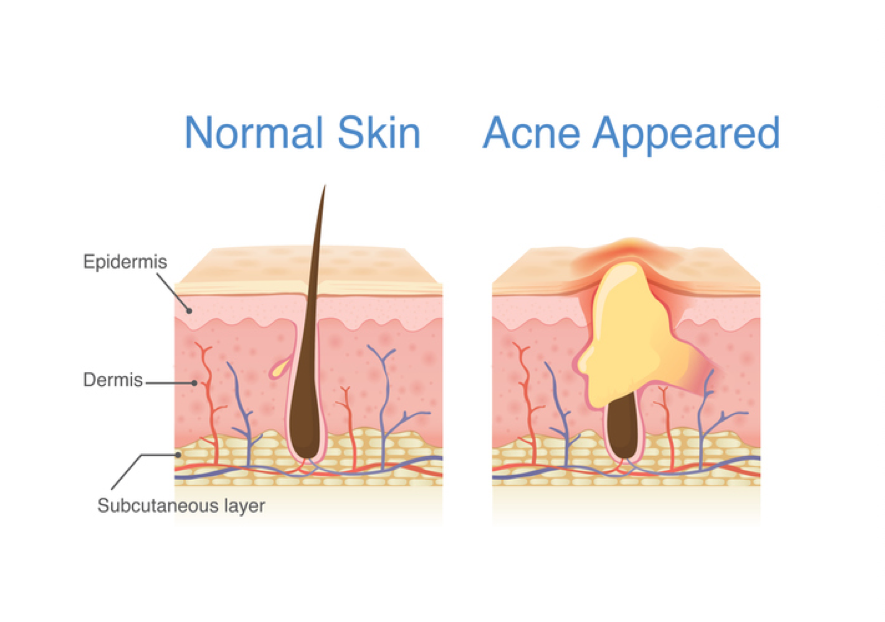Votre panier est vide
An Inside Look at Acne
Only a few of us haven’t experienced acne some time during our lifetime. If we’re lucky, it started and ended in our teenage years, but most of us will cross paths with it even when we cross the threshold into adulthood. So, what is this acne that most of suffer from? And what causes it? Here is everything you need to know.
What is acne?
This is the easy part. Acne, or a comedo in medical terms, is actually a clogged hair follicle which was blocked by oil or dead skin cells. These clogged hair follicles tend to become inflamed and infected by bacteria, at which stage they will become either whiteheads, blackheads or pimples on the skin’s surface. Here’s a quick guide to the various comedones:
Blackheads – a partially clogged pore.
Whiteheads – a pore clogged with sebum.
Pimples – an inflamed or infected white or black head.

Acne is actually a clogged hair follicle. Photo: Istock.

Always an unpleasant surprise. Photo: Istock.
What causes acne?
Here are the four main causes.
Oil production. Our sebaceous glands are responsible for the production of sebum, an oily secretion. When, for various reasons, the glands go into overproduction mode all that excess oil tries to make its way out but instead, clogs our pores. Yet, sometimes it’s not about the amount but rather the type of sebum. Some people have thicker sebum, which tends to stay in the inner layers of the skin instead of leaking onto the surface, like the more liquid oil does. This, too, results in clogged pores.
Bacteria. Propionibacterium acnes, or P. acnes, is a bacterial infection that grows in an oil-rich clogged gland. The bacteria feeds on the sebum and excrete waste products which irritate the follicle. On the surface, this results in whiteheads or blackheads.
Skin cells.When our body functions properly, dead surface cells are moved through our skin layers to be shed through the pores. But, in acne-prone pores there is a proliferation of cells trying to push through the pore, clogging it in the process. There, in the pore, the dead cells meet the sebum and the two become one, leading to a plug that is the perfect environment for bacteria. This is called a microcomedone in medical lingo, and is the forebear of all acne.
Gland level.When bacterial infection causes inflammation, the gland might rupture under the skin. When this happens, whether closer to skin surface or in the deeper layers, our body tries to repair the situation with white blood cells, causing an inflammation.
